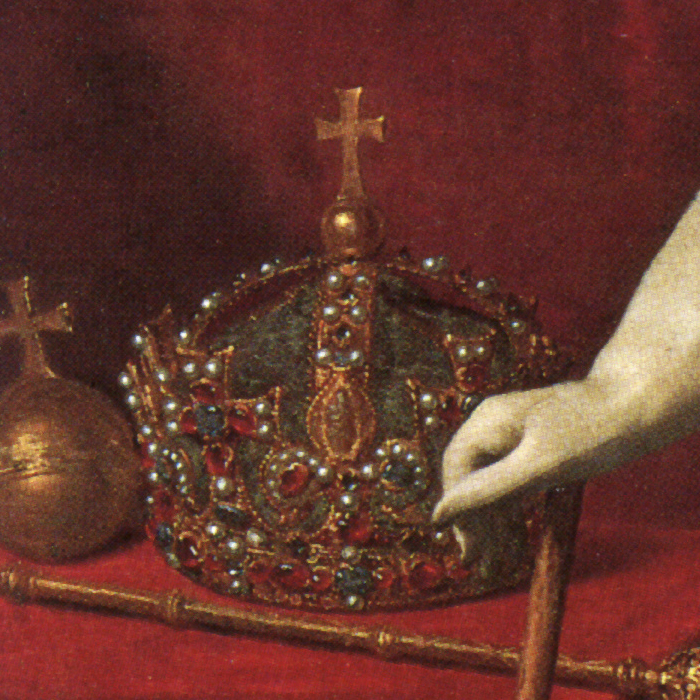The St. Edward’s Crown, the centrepiece of the Crown Jewels of the United Kingdom, made for King Charles II in 1661, as a replacement for the medieval crown, which was melted down in 1649, when Parliament abolished the Monarchy during the English Civil War, which was used for the Coronation of Monarchs since 1661, for the last 350 years, after the restoration of Monarchy, is once again in the News, after it was reported by the Buckingham Palace that the Crown which was kept in the Tower of London, was removed for modification to suit the head of King Charles III whose Coronation is due to take place on May 6, 2023 at the Westminster Abbey.

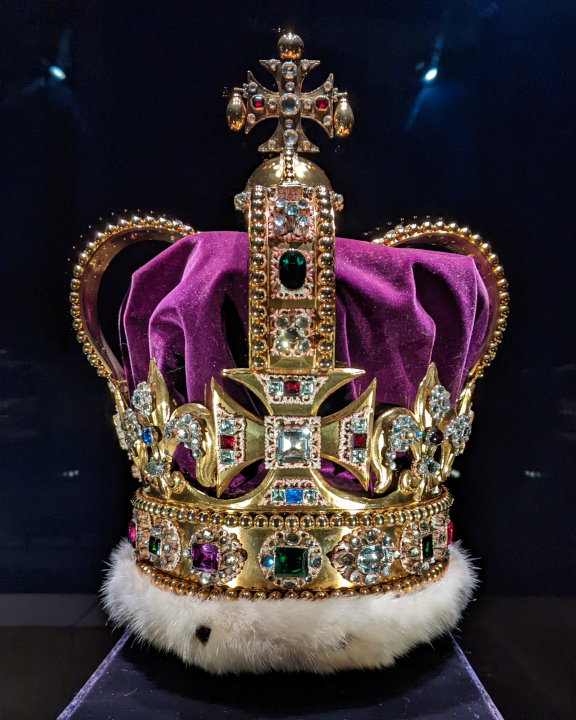
The St. Edwards’s Crown, having a circumference of 66 cm (26 ins) and a height of 30 cm (12 ins) is made of 22-carat gold and weighs a cumbersome 2.2 kg, leading to a reluctance on the part of some monarchs to use it for their coronation. The Crown has four fleuurs-de-lis alternating with four crosses patte, which support two dipped arches, topped by a monde and cross pattee. Its purple velvet cap is trimmed with ermine. Among the 444 precious and semi-precious stones set on the crown are 345 rose-cut aquamarines, 37 white topazes, 27 tourmalines, 12 rubies, 7 amethysts, 6 sapphires, 2 jargoons, 1 garnet, 1 spinel and 1 carbuncle.
The St. Edward’s Crown, though considered as the Official Coronation Crown after the restoration of the monarchy, only six monarchs have used this crown for their coronation, due partly to the heavy weight of the crown. The monarchs that used the St. Edward’s Crown for their Coronation were Charles II (1661), James II (1685), William III (1689), George V (1911), George VI (1937), and Elizabeth II (1953). Other monarchs uused various other lighter versions suuch as the State Crown of George I and the 1838 Imperial State Crown uused by Queen Victoria and Edward VII. The new King of the United Kingdom King Charles III appears to be following the tradition set by his mother and close ancestors by selecting the traditional coronation crown, the St. Edward’s Crown for his coronation taking place on May 6, 2023.
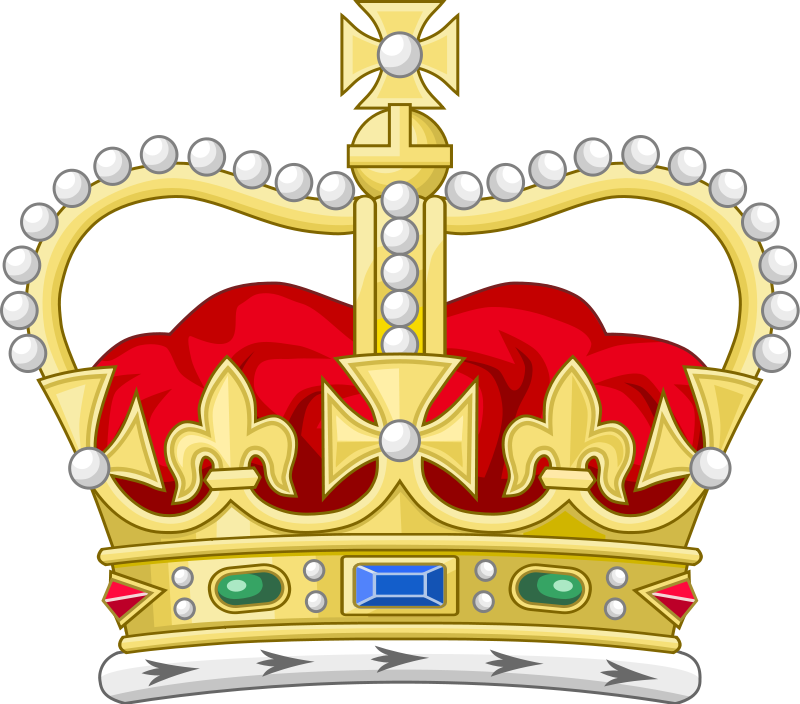
However, the St. Edward’s Crown used by Queen Elizabeth II as a heraldic emblem of the United Kingdom, symbolising the sovereignty and authority of the Monarch, and appearing on the Royal Cypher, the Royal Arms of the UK, the Royal Badges of England, The Badges of the Police Forces of England and Wales, NHS Ambulance Service, His Majesty’s Coastguard, the British Army, the Royal Marines, the Royal Air Force, HM Revenue and Customs, and the Royal Mail, might be replaced by the new heraldic emblem chosen by Queen Elizabeth II’s successor King Charles III as his new Royal Cypher, the Tudor Crown. It is expected the new Royal Insignia, the Tudor Crown will now be used in representations of the Royal Arms, Badges and Military Uniforms.
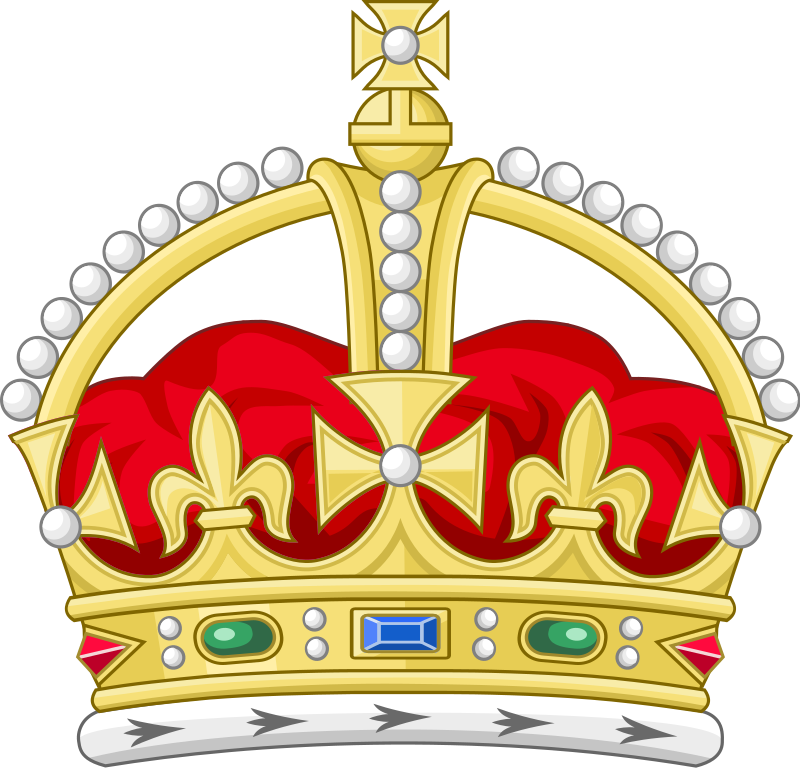
The Tudor Crown, also known as Henry VIII’s Crown, was the Imperial and State Crown of English Monarchs from around the time of Henry VIII until it was destroyed during the Civil War in 1649. The date of manufacture of this crown is unknown, but King Henry VII or his son and successot Henry VIII are believed to have commissioned the crown, first documented in writing in a 1521 inventory of Henry VIII’s jewels, where the crown is referred to as ‘The King’s Crown of Gold.”
The Tudor Crown which was more elaborate than its medieval predecessor, had two arches, five ccrosses pattee and five fleurs-de-lis and was decorated with emeralds, sapphires, rubies, pearls, diamonds and at one time, the Black Prince’s Ruby which was actuually a large spinel. In the centre petals of the fleurs-de-lis were gold and enamel figurines of the Virgin Mary, St George and three images of Christ, whose incorporation was believed to be an effort by Henry VIII to secuure his position as the Head of the New Church of England. Even after the end of the Tudor dynasty following the death of Elizabeth 1, the Stuart Kings who succeeded, James I and Charles I, are also known to have worn the Tudor Crown. The Tudor Crown was finally broken up and its valuable components sold following the abolition of the monarchy and the execution of Charles 1 in 1649
From the year 1902 until the year 1953 when Queen Elizabeth II ascended the throne, a stylised image of the Tudor Crown was used as the Royal Cypher to symbolise the Crown and the English Monarch’s Royal Authority, being used in Coats of Arms, Badges, Logos, and various other insignia throughout the Commonwealth realms. In 1953, Queen Elizabeth II opted for the St. Edward’s Crown as the heraldic emblem and Royal Cypher, and now after 70 years her successor King Charles III has decided to restore the Tudor Crown as the Heraldic Emblem anf Royal Cypher of the new Monarch of the United Kingdom and the Commonwealth.
Our account on the present Royal Crowns of the Constitutional Monarchy in the United Kingdom will not be complete if we don’t say something about another important crown, the Imperial State Crown, which also symbolises the sovereignty of the Monarch, and has existed in various forms, since the 15th Century, and whose current version was made in 1937. The Crown is worn by the Monarch after the Coronation using the extra-heavy St. Edward’s Crown and also used at State Openings of Parliament.
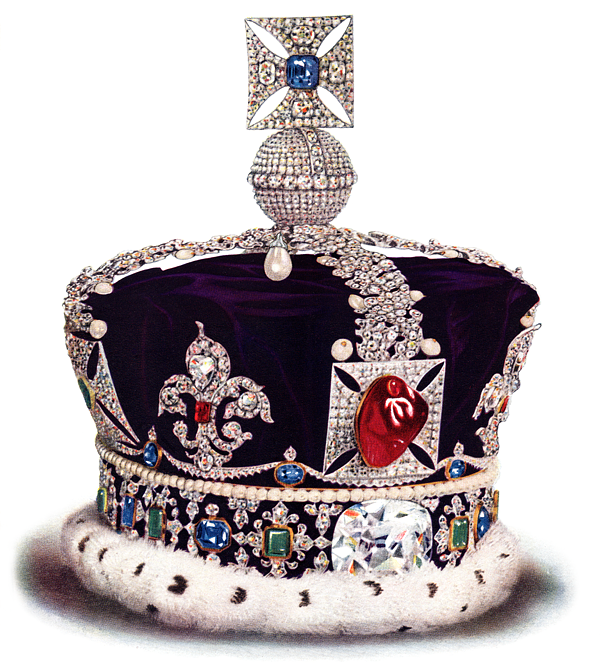
The Imperial State Crown is 12.4 ins (31.5 cm) tall and weighs a reasonable 1.06 kg (2.3 lb), having four fleurs-de-lis and four crosses pattee, supporting two arches topped by a monde and cross pattee, and its purple-velvet cap trimmed with ermine. The frame of the crown is made of gold, silver and platinum and is decorated with 2,868 diamonds, 273 pearls, 17 sapphires, 11 emeralds and 5 rubies. Among the notable precious stones incorporated on the Crown are the Edward’s Sapphire on the top cross, believed to have been taken from the ring of Edward the Confessor, when he was re-interred at the Westminster Abbey in 1163, and the Black Prince Ruby, a large spinel, on the front cross. In 1909, the 104-carat Stuart Sapphire, set in the front of the crown, was moved to the rear of the crown, and replaced by the renowned 317-carat Cullinan II diamond, also known as the Secon Star of Africa.
When not in use, The St. Edward’s Crown and The Imperial State Crown are placed on Public display in the Jewel House, at the Tower of London.

